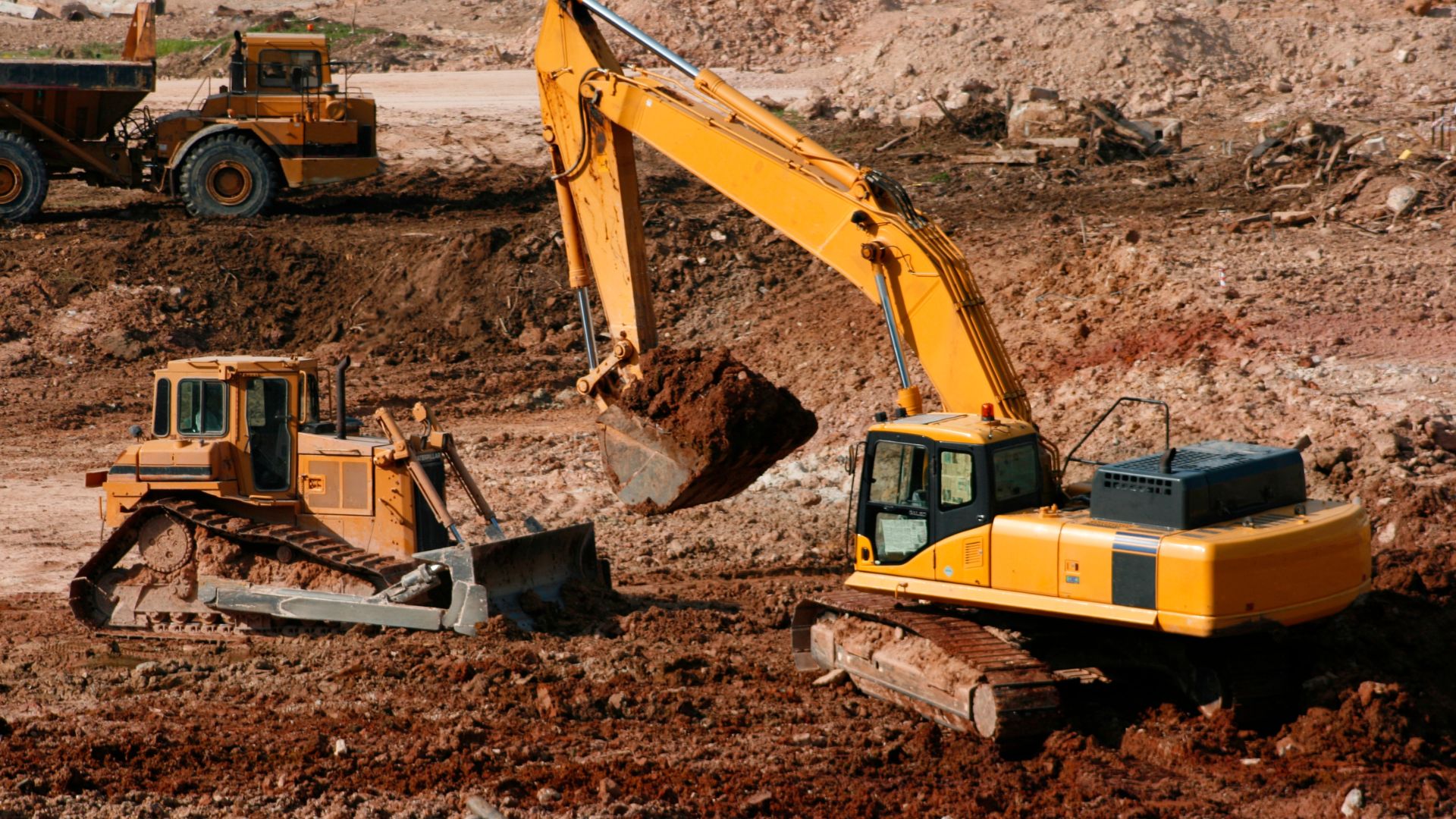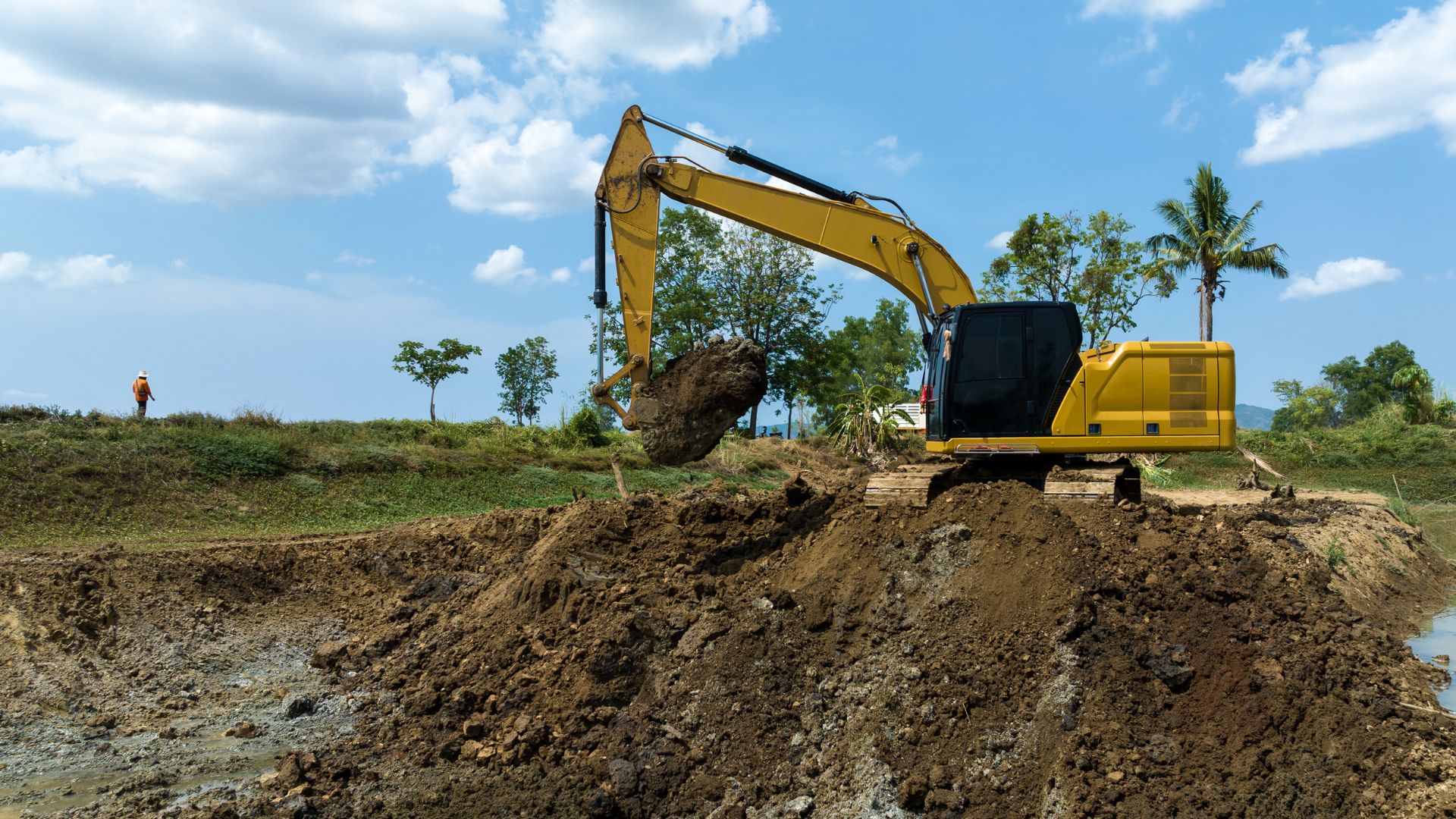Common Excavation Hazards
- Cave-ins: The most dangerous excavation hazard, occurring when walls collapse due to unstable soil.
- Falls and Equipment Accidents: Workers and machinery can fall into unprotected trenches.
- Underground Utility Strikes: Hitting gas, water, or electrical lines can cause severe damage and injuries.
- Hazardous Atmospheres: Toxic gases, lack of oxygen, or trapped fumes can accumulate in deep excavations.
- Soil Instability and Water Accumulation: Weak soil or unexpected water infiltration can lead to sudden collapses.

Key Safety Precautions for Excavation Work
- Conduct a Site Analysis Before Digging: A thorough site inspection helps identify soil conditions, underground utilities, and potential risks. Conducting a geotechnical survey ensures proper planning and hazard mitigation.
- Obtain Necessary Permits and Utility Marking: Before excavation begins, obtain all required permits and approvals. Use utility location services to mark underground pipes, electrical lines, and gas conduits to avoid accidental strikes.
-
Implement Protective Systems for Stability: To prevent cave-ins, use one or more of the following methods:
- Sloping – Angling the excavation walls to prevent collapses.
- Benching – Creating steps or ledges in excavation walls for added stability.
- Shoring – Installing support systems like steel plates or hydraulic braces to reinforce trench walls.
- Shielding – Using trench boxes or protective barriers to protect workers inside the trench.
- Ensure Proper Equipment and Operator Training: Only trained and certified personnel should operate heavy machinery like excavators and bulldozers. Regular equipment inspections should be conducted to prevent mechanical failures.
- Monitor Air Quality and Ventilation: Deep excavations may have poor oxygen levels or hazardous gases. Use gas detectors to monitor air quality and ensure proper ventilation when working in confined spaces.
- Establish Safe Entry and Exit Points: Ladders, ramps, or stairways must be securely placed within trenches deeper than 4 feet. Workers should have a safe and quick exit in case of emergencies.
- Keep Heavy Equipment and Materials at a Safe Distance: Stockpiling materials or placing heavy machinery too close to excavation edges increases the risk of collapse. Maintain a safe buffer zone to avoid adding pressure to trench walls.
- Inspect Excavation Sites Regularly: Daily inspections should be conducted by a competent person to identify hazards and ensure safety measures are in place. Excavation sites should also be inspected after rain, vibrations, or any environmental changes.
- Use Protective Gear and Communication Systems: Workers should always wear PPE (Personal Protective Equipment) such as hard hats, gloves, safety boots, and high-visibility vests. Effective communication systems should be in place to warn of potential hazards.
-
Plan for Emergency Response: Every excavation site should have a clear emergency plan, including:
- Rescue procedures in case of cave-ins or equipment accidents.
- First-aid stations readily available for injured workers.
- Emergency contact numbers easily accessible to all team members.

